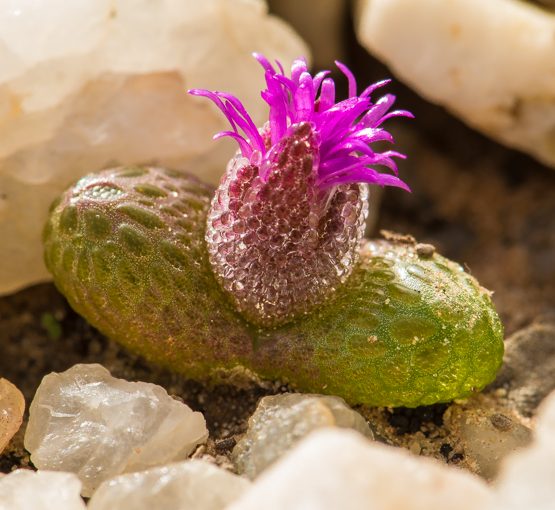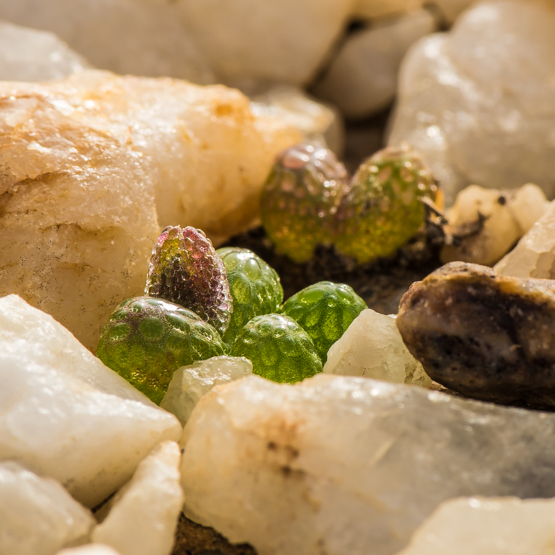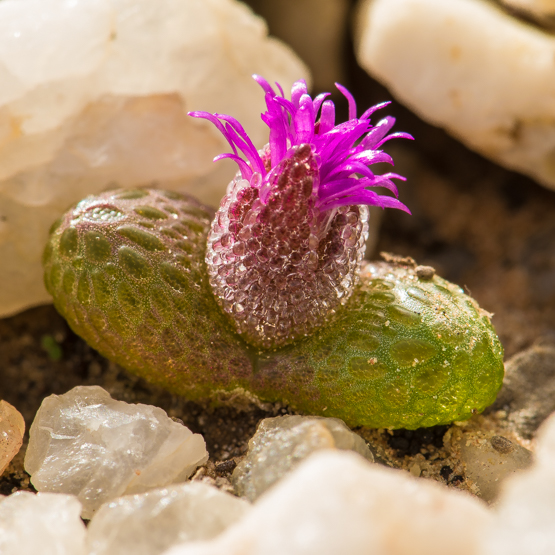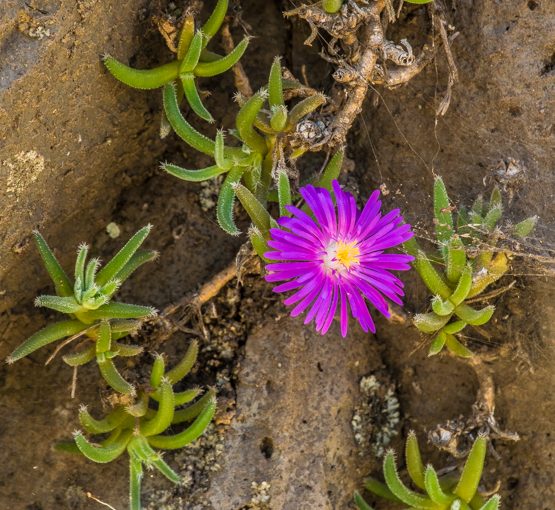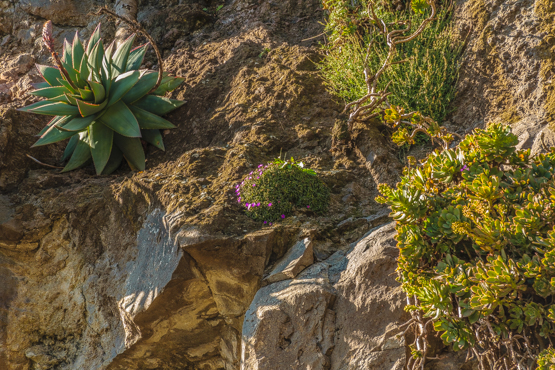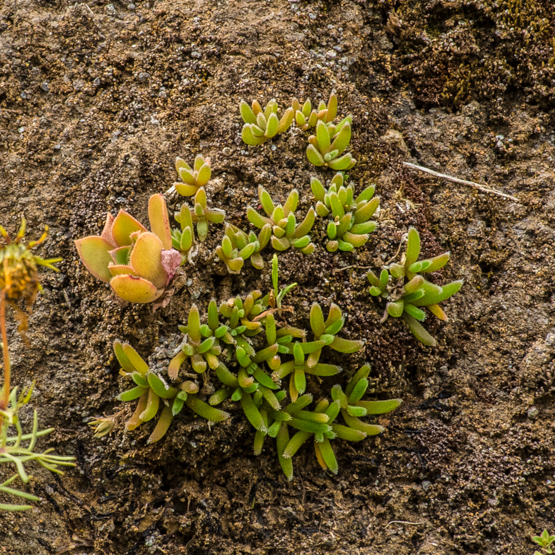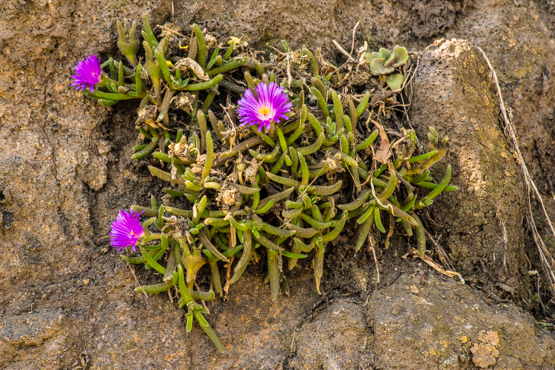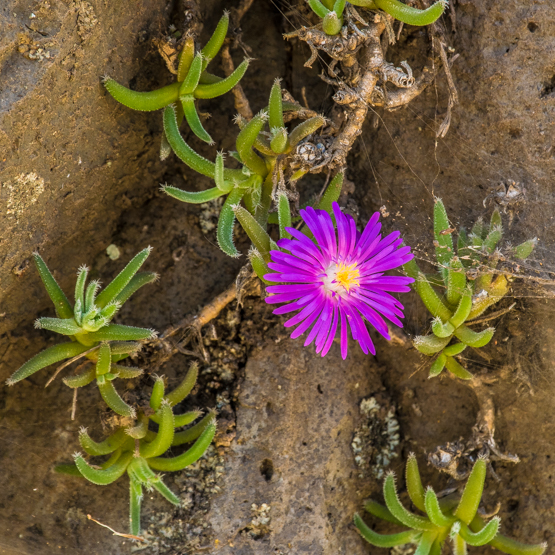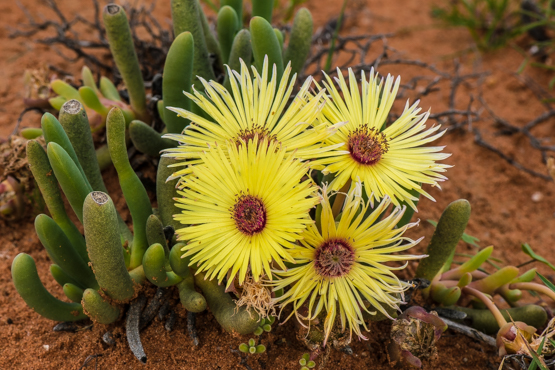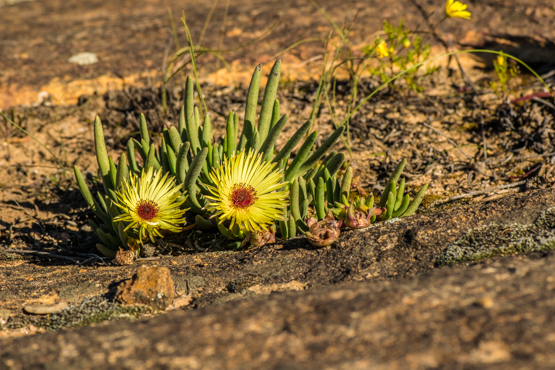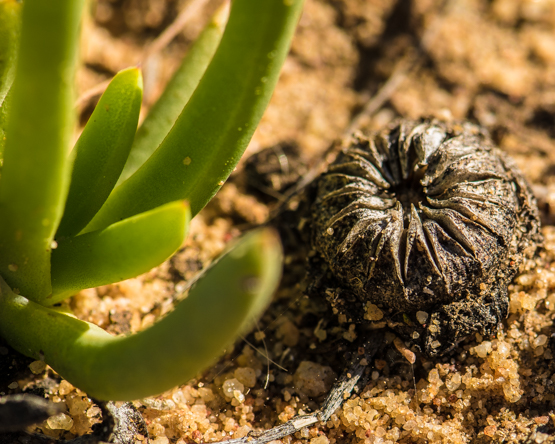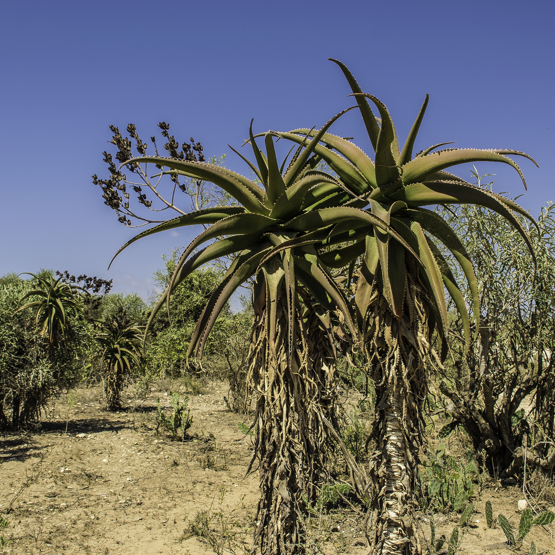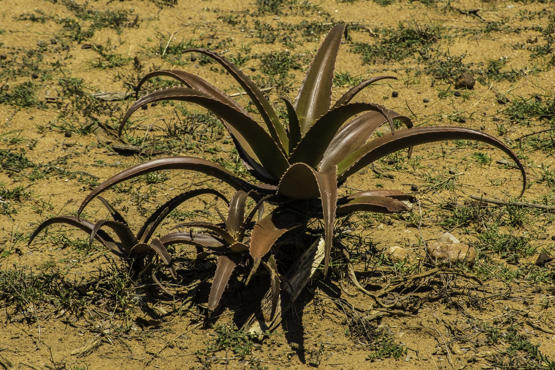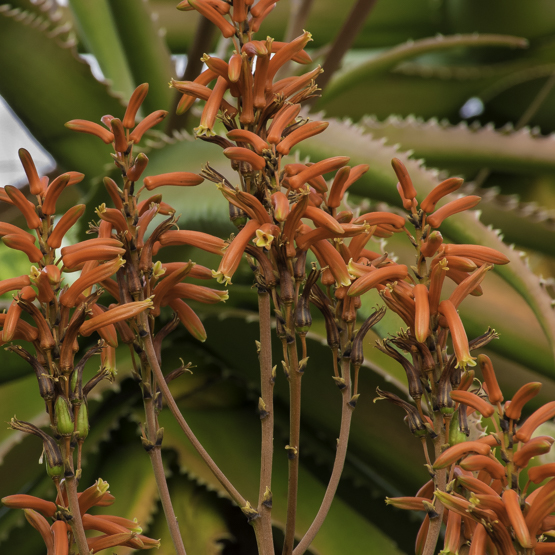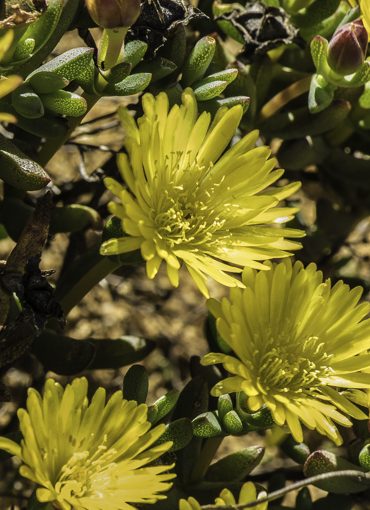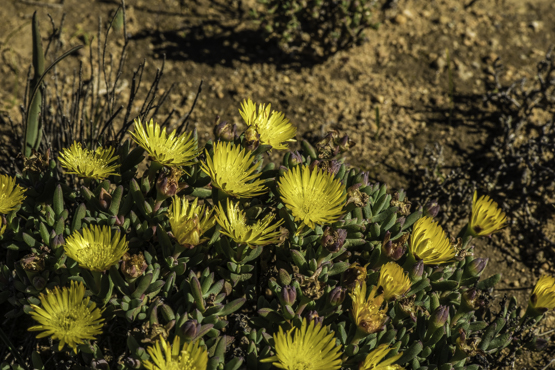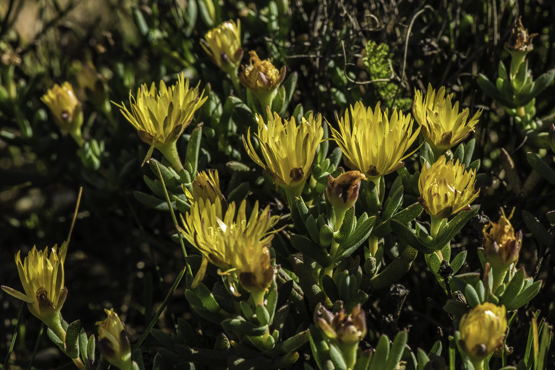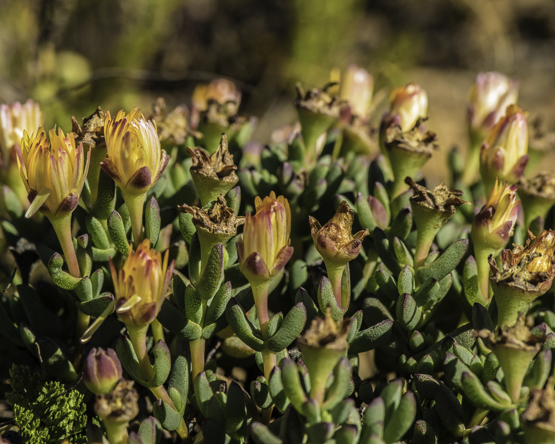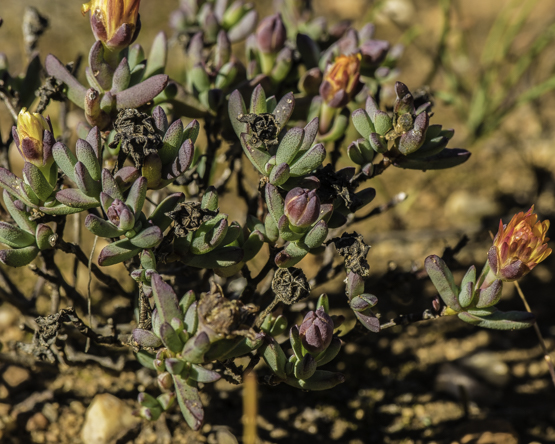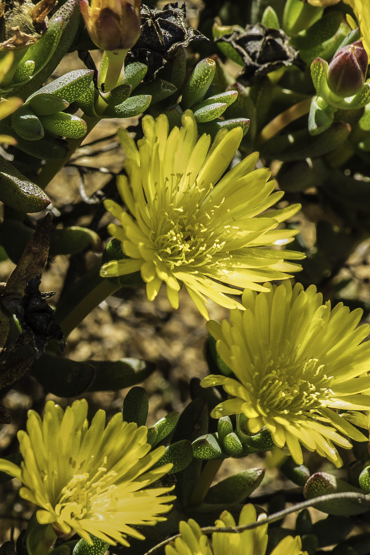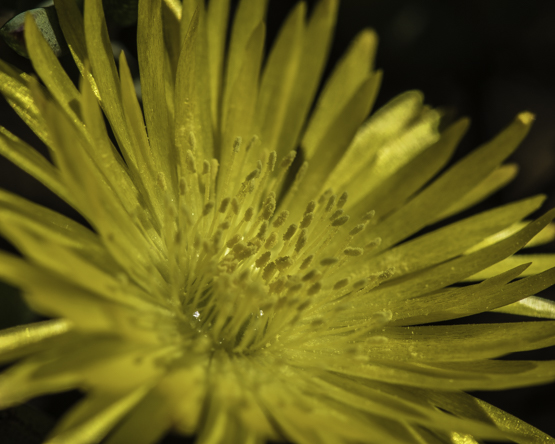This could well be the most common Anacampseros, both in the wild and in cultivation. In nature it occurs wide-spread from the Worcester to the Grahamstown area on rocky flats and slopes.
It is a robust species compared to its siblings, forming clumps up to 5 cm tall from a thick, fleshy root-stock.
The leaves are to 3 x 1.8 cm, arranged in rather lax rosettes. They are triangular in cross-section and range from egg-shaped to almost circular when seen from above, with an acute tip and short hairs (shorter than the leaves) at the base.
The relatively stout inflorescence is 5 – 15 cm tall, with 1 – 4 flowers.
After good rains the plants will resemble the one in the first picture. 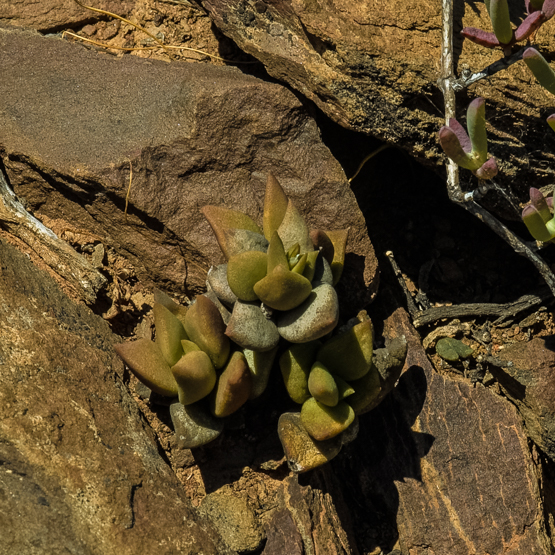
Under more stressful conditions the plants turn yellowish/brownish/reddish, so that they are often difficult to find (especially when they grow in crevices like the next three ones).

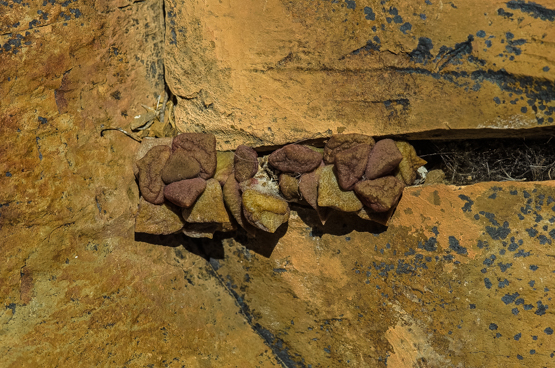
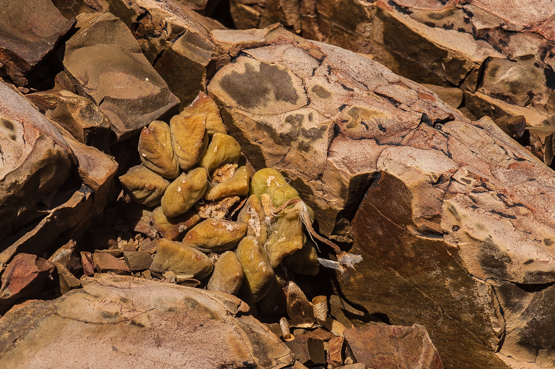
The dark pink flowers are 3 – 3.5 cm in diameter and open for 1.5 – 3 hours in the late afternoon and only when the sun shines. In dull weather they stay closed and pollinate themselves. Most flowers appear in November-December.
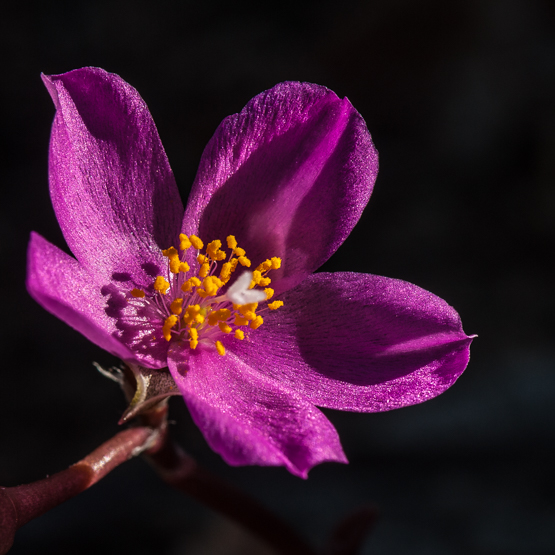
The basket-like fruits have a charm all of their own.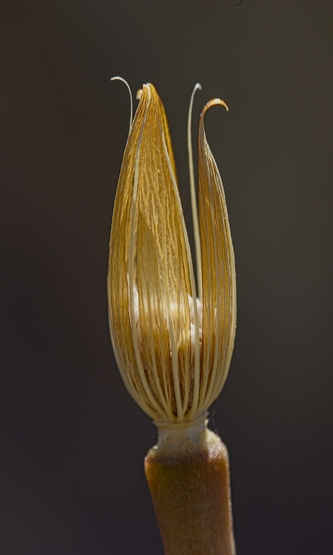
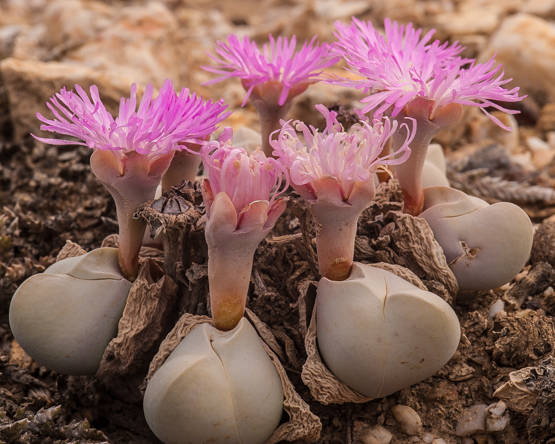




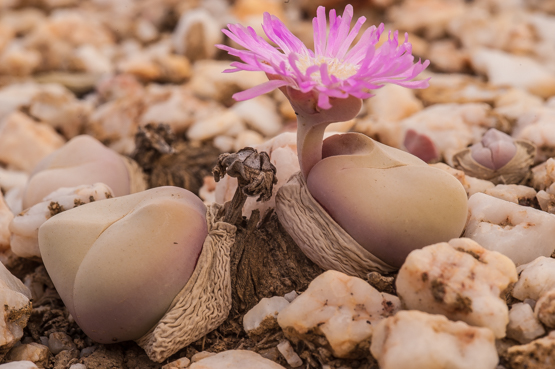

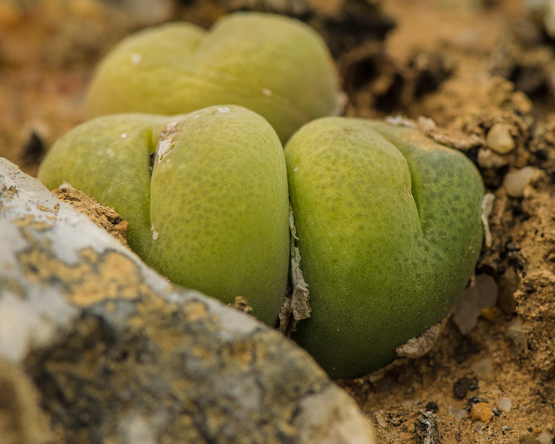
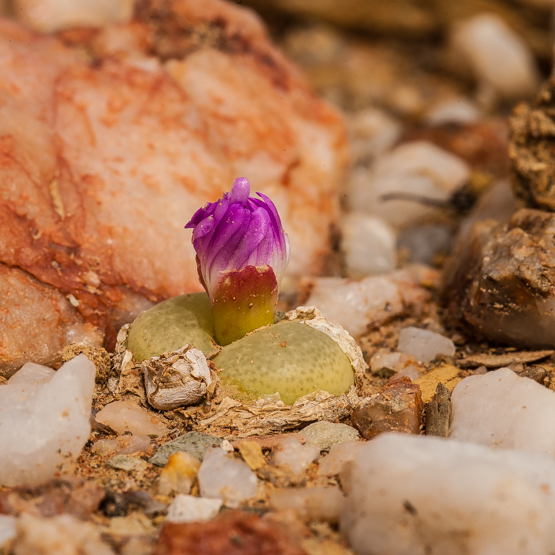

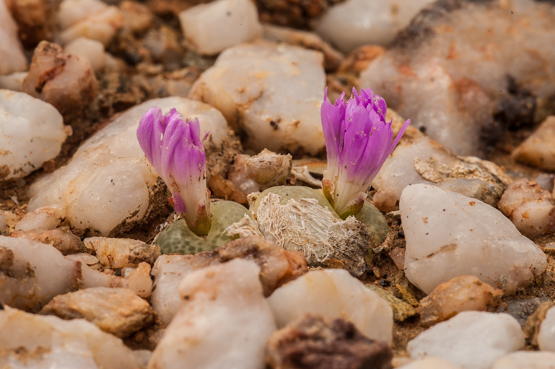
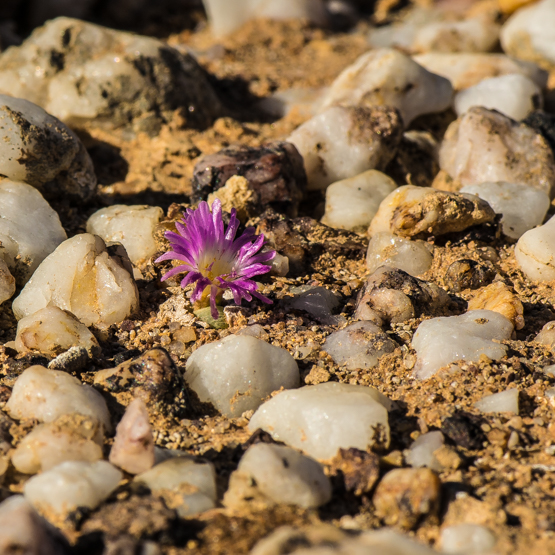


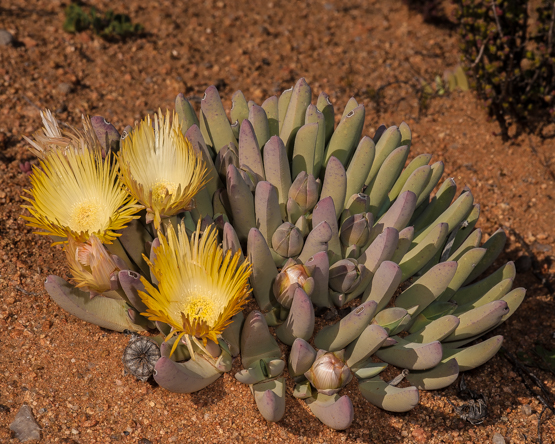
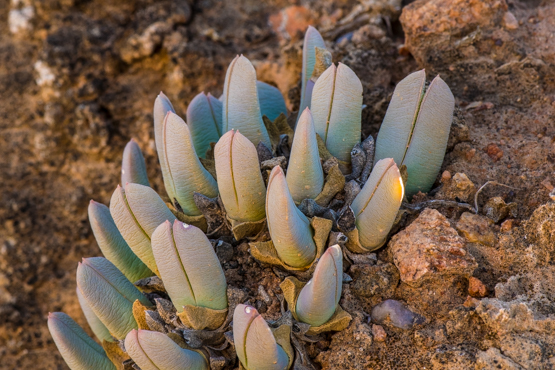

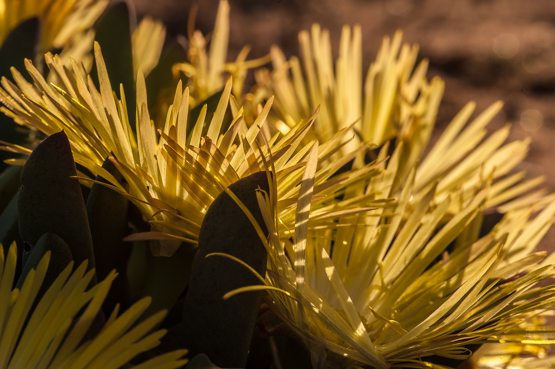 # 2,3 and 4: mid July 2011
# 2,3 and 4: mid July 2011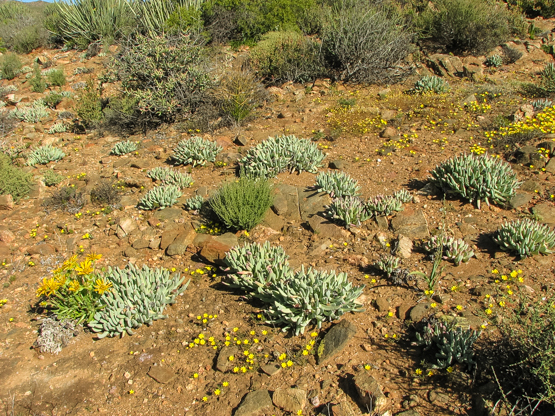

 # 6 and 7: late August 2016
# 6 and 7: late August 2016